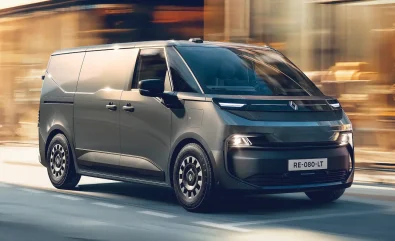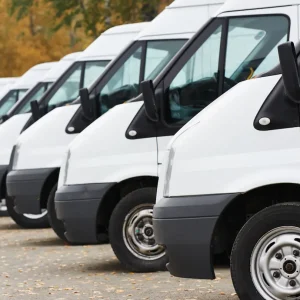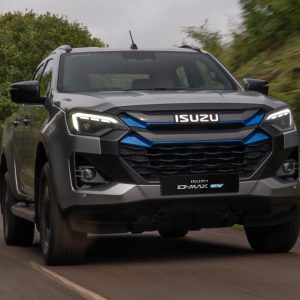
Renault revealed the production version of its Trafic E-Tech medium van at the Solutrans commercial vehicle show in Lyon, France in November. The panel van, which will be the biggest seller, will be the first of the Trafic E-Tech line-up to go on sale in the UK late next year and will be followed in 2027 by the high-roofed Estafette parcel delivery van and by a chassis cab model that is designed for conversions.
The chassis cab was initially called the Goelette but Zakaria Zeghari, Renault’s vice president of global sales and marketing commercial vehicles, claims this was just a project name used during development.
“We are now coming back to what the customer is used to [Trafic E-Tech],” he said.
The Trafic panel van will come with a choice of 4.87m (L1) and 5.27m (L2) vehicle lengths, with load capacities of 5.1m3 and 5.8m3 respectively. A height of 1.9m will allow access to underground car parks. It has a maximum payload of 1.25-tonnes and a towing capacity of 2.0-tonnes, according to Renault.
The Trafic E-Tech will come with a choice of 60kWh and 81kWh battery options, giving WLTP ranges of up to 217 miles and 280 miles respectively. The electric van will feature 800V fast-charging technology, enabling a 15–80% charge in
20 minutes.
Flexis, which was established as a joint venture in 2024 by Renault, Volvo and logistics and shipping company CMACGM, will market the three models separately under its own brand name.
Volvo-owned Renault Trucks has said it will distribute the Flexis vans and customers, expected to be large delivery fleets and logistics firms, will also be able to source them directly from Flexis.
Renault will sell the vans through its specialist Pro+ LCV network. Jan Ptacek, Renault’s head of LCVs, denied Flexis and Renault will tread on each other’s toes in marketing the vans. “Renault has its own commercial strategy, Flexis has its own commercial strategy,” he said. Ptacek likened Renault’s relationship with Flexis to its existing product sharing agreements with Nissan, Renault Trucks and Mercedes-Benz.
“The LCV world is now the world of partnerships,” he said. “The investment to develop LCVs is huge, partnerships make it sustainable.”
Ptacek did not rule out Nissan, whose van range is based entirely on Renault platforms, marketing a re-badged Trafic E-Tech in future but said: “Today we don’t have a plan on this.”
Whether badged Flexis or Renault, the new electric vans are all built on a skateboard platform with SDV (software defined vehicle) architecture that supports fleet management functionality. One of SDV’s prime functions is to reduce downtime through features such as over the air updates and predictive maintenance.
“Every time the van stops, the business stops,” said Zeghari, “So how can you reduce downtime? [With] software on wheels.”
Renault will continue selling the diesel-powered Trafic alongside the electric version so long as there is demand for it but will not introduce a hybrid version.
As a legacy manufacturer with a history in ICE vehicles, Ptacek acknowledges the difficulty for Renault in competing with new Chinese brands that can pump all their resources into BEV development, but countered: “We have a really good product.” He points to Renault’s expertise in the LCV sector and the value within its service network.
“Renault has a lot of arguments [in its favour] in the world of LCVs,” he said. “We are ready to face the challenge.”





